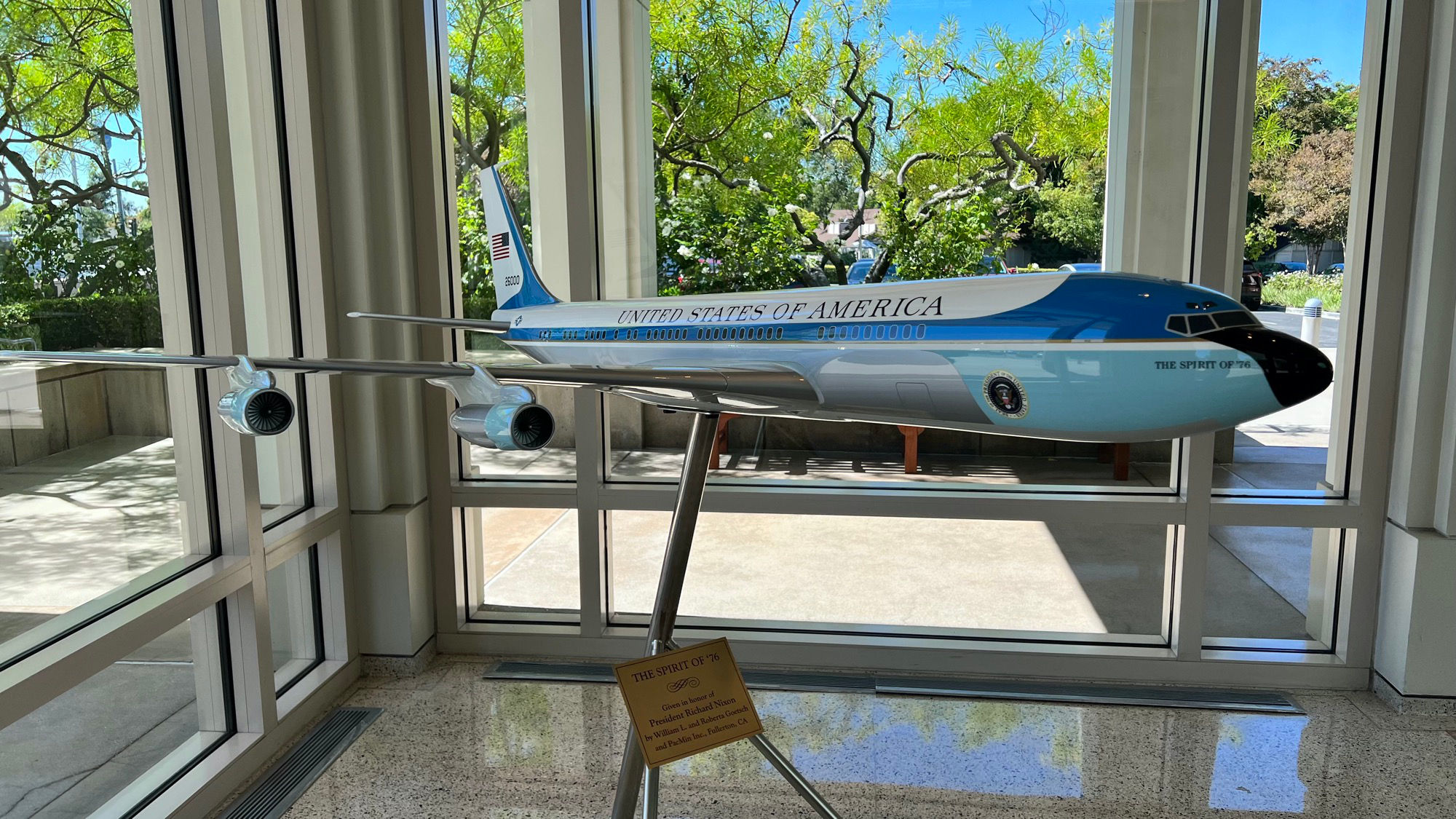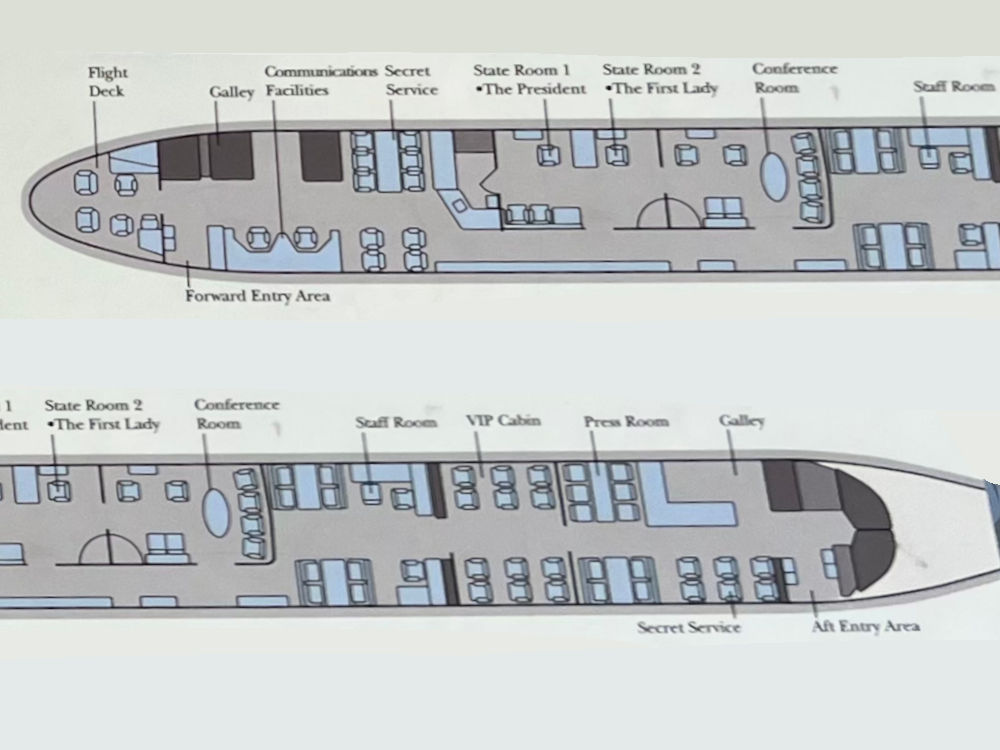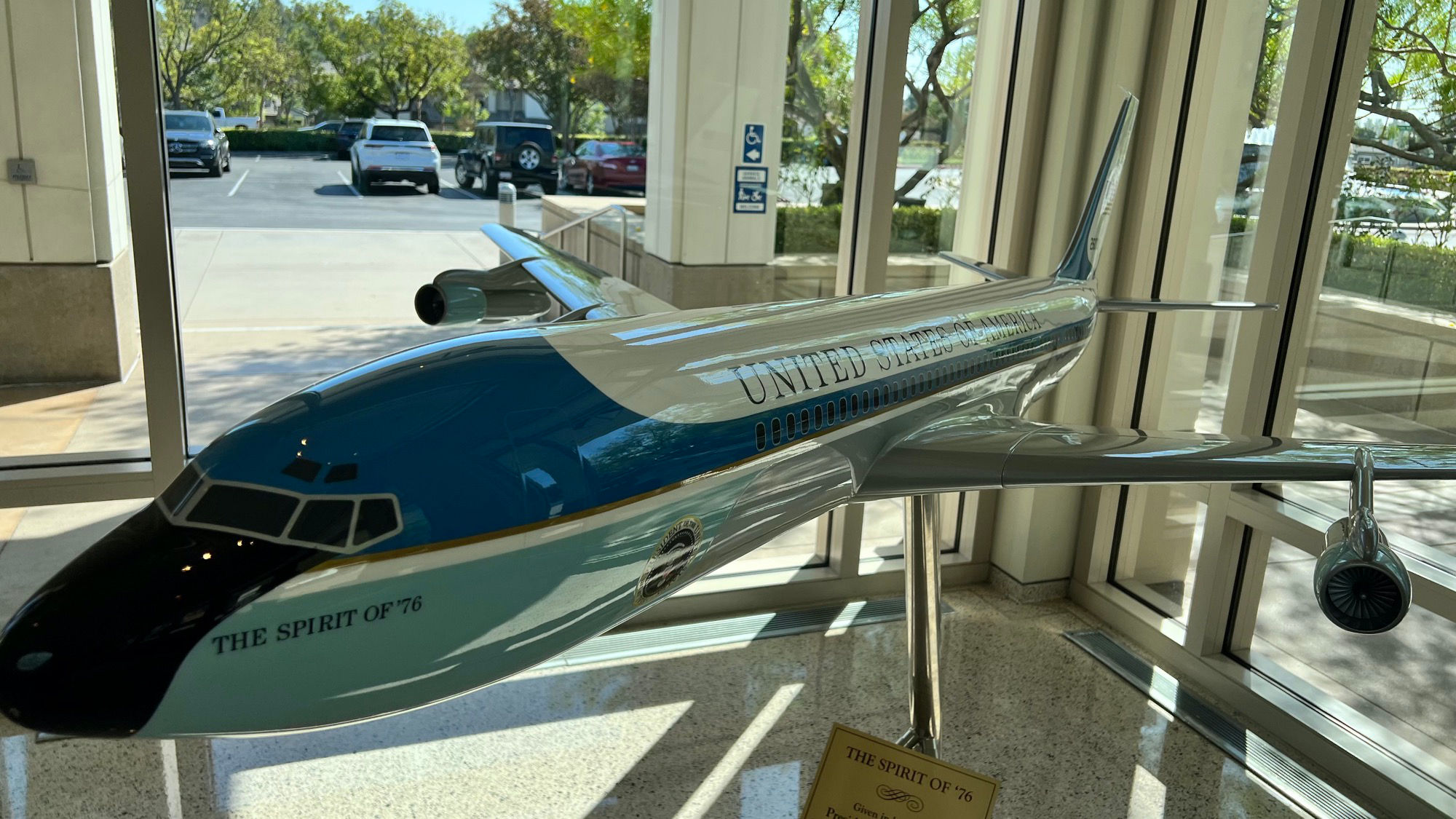Special Air Mission (SAM) 26000 was the official military name for the sleek aircraft that became known as Air Force One whenever the President was aboard. 26000 (the number is the plane's uniquely identifying tail number) was the first jet aircraft designed specifically for use by the President of the United States. The distinctive graphics and blue-and-white color scheme were the work of the famous industrial designer Raymond Loewy.
In its thirty-six years of service - from 1962 to 1998 - 26000 flew eight presidents. JFK flew this plane to Dallas on the morning of November 22, 1963 - and it carried his coffin back to Washington that afternoon. LBJ was sworn into office as the thirty-sixth President in this plane's presidential cabin.
President Nixon logged more flying time than any president before him - an unprecedented 550,000 miles all across America and to nearly thirty countries around the world.
Air Force One provided a proud backdrop during President Nixon's historic flights to the People's Republic of China, the Soviet Union, and the Middle East.
In 1971, Nixon dubbed this plane the Spirit of '76 in honor of America's 1976 bicentennial celebration. By the end of the Nixon era, this Spirit of 76 had become a familiar symbol not only of the presidency, but of America itself.
In February 1973, President Nixon became the first President to fly on SAM 27000 [eatlife.net/reagan-library/air-force-one.php], the identical sister plane of 26000.

- Aircraft Designation: Boeing 707-353B
- Air Force Designation: VC-137C
- Range:
- Max Range: 7,000 miles
- Max Flying Height: 42,240 feet
- Top Speed: 620 mph
- Powered by four Pratt & Whitney JT3D-3B turbo fan engines
- Cost to Build: $7,024,000
- Wingspan: 146 feet
- Maximum Takeoff Weight: 328,000 Ibs.
- Certified seating: 59 passengers

This great plane that took us to China, to Russia, to the Mideast, this great Spirit of '76 has got to be long remembered.


- Flight Deck
- Forward Entry Area
- Galley
- Communication Facilities
- Secret Service
- State Room 1
- The President
- State Room 2
- The First Lady
- Conference Room
- Staff Room
- VIP Cabin
- Press Room
- Secrete Service
- Galley
- Aft Entry Area

SAM 26000's regularly scheduled maintenance in March 1969 allowed President Nixon to reconfigure the plane's floor plan to fit his administration's agenda and goals. Instead of flying time being downtime, the Nixon Air Force One became a high-tech, high-performance working extension of the White House.
The creation of a special three-room suite forward of the wings allowed for private office space for the First Family. Next came a large staff compartment with desks and typewriters, an eight-seat compartment for VIPs, and an aft cabin for the traveling press and Secret Service. New state-of-the-art communications systems allowed anyone on board to reach anywhere in the world.

As the plane's pilot Col. Ralph Albertazzie described it aboard President Nixon's Air Force One, "the emphasis was on decorum, efficiency, keeping the schedule, finishing one's assigned task, and dutifully turning to another."








